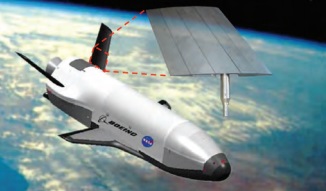Chapter: Flight and Ground Experimental Test Technologies, new invention technology, Research project papers,
Hot Ground Vibration Tests

Hot Ground Vibration Tests
Ground vibration tests
or modal surveys are routinely conducted to support flutter analysis for
subsonic and supersonic vehicles. However, vibration testing techniques for
hypersonic vehicles are not as well established due to the thermoelastic
interactions that can occur when high-temperature materials are incorporated
into a hot structure
that contains metallic
components. In recent years, numerous high-temperature materials, new
fabrication technologies, and sensors have been explored for hypersonic vehicle
applications. A research team
is working to develop
a high-temperature modal survey to expand the research database for hypersonics
and improve the understanding of such dual-material interactions.
Work to date: Armstrong directed a
program to test a carbon-silicon carbide (C/SiC) Ruddervator
Subcomponent Test Article (RSTA) to support hypersonic material research. The
RSTA has undergone numerous thermal, thermal-mechanical, and thermal-vibration
tests. The team obtained good modal data at lower temperatures, but the
off-the-shelf, high-temperature accelerometers malfunctioned on the hotter
region of the test article. The experiments yielded test data that will be
useful for future work and launched a high-temperature accelerometer
development effort.
Looking ahead: The research team has obtained custom-made and multiple
other high-temperature accelerometers and is taking steps to understand,
evaluate, and characterize their complexity and functionality in preparation
for future thermoelastic vibration tests.
Benefits
Innovative: Expands the
research database for hypersonics
Pioneering: Extends
the understanding of the modal characteristic effects from high
temperatures on hypersonic vehicles
Aids research: Contributes
to the understanding of flutter behavior at high temperatures
Applications
Hypersonic vehicle research and design
Flight and Ground Experimental Test Technologies
Armstrong conducts innovative flight research that continues to
expand its world-class capabilities, with special expertise in research and
testbed platforms, science platforms, and support aircraft. Re-searchers place
particular emphasis on providing accurate flight data for research aimed at
designing next-generation flight vehicles. Described here are research projects
that are seeking to increase safety, reduce costs, and dramatically decrease
testing and approval times. Armstrong's new verification and validation
(V&V) simulation test bench is particularly innovative as it integrates
reconfigurable software models for multiple aircraft components. These models enable
high-fidelity simulations to be performed more easily and at significantly
faster rates than are possible with hardware-centric test benches.
Related Topics